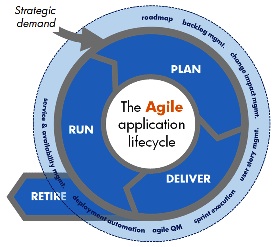CSC/ECE 517 Fall 2010/ch6 6d ub
Limitations of Agile vs. other software-development methods
Agile software development is a group of software development methodologies based on iterative and incremental development, where requirements and solutions evolve through collaboration between self-organizing, cross-functional teams.1
Developing a fairly large or a small software project involves some planning. Though there are proponents of the sit on the computer, code and be done with it approach, it hardly works for projects as their complexity, both in terms of deliverable and resources increases. There are numerous ways in which a software project is planned and executed. From the more classic and orthodox models like the waterfall model to the newer XP philosophies such as Agile and Scrum, these methodologies are different ways of achieving the same goal, each with its pros and cons.

Agile is an iterative method of software development wherein the software development is done in terms of multiple stages which may/may not build upon each other. At the outset of the project, the various user requirements are gathered and split up into various such relevant stages which are completed one after the other a reviews done. Due to its iterative nature, agile allows for dynamic project scope and development with a high degree of user interaction. In comparison to more orthodox and classical methodologies, Agile can be looked upon as a combination of spiral module with a waterfall module which is executed in each spiral of software development.
As mentioned in the description of this wiki, the paper by Hoda et al 'Agility in Context' 2, though Agile looks as a excellent method to carry forward and execute various real world software development problems, there are many limitations and modification that are needed to its methodology for use in real world scenarios in many cases.
Agile and its strengths
Agile due to its iterative nature is based on a system where each iteration takes into account some of the user requirements and code is developed based on those requirements. Based on user feedback, any changes if necessary are made to the code in subsequent iterations. This makes Agile projects highly adaptive to change in specifications as compared to more classical models.3K. Beck. Extreme Programming Explained: Embrace Change. Addison-Wesley, 2000. Agile also is very customer centric, where client feedback at the end of each stage is essential in work on next iteration. Also, a high degree of involvement from the customers is needed to create specifications that can be rightly mapped to the priorities and split up into iterations at each stage of the agile project. Agile is also a proponent of highly integrated and synched teams. This is due to the highly dynamic and iterative methodologies used in Agile. It is these strengths which are a limiting factor in many of the projects which do not implement on one of the above features by the book, and hence need software development to be carried out by some modified Agile methodologies which take features from some classical development models.